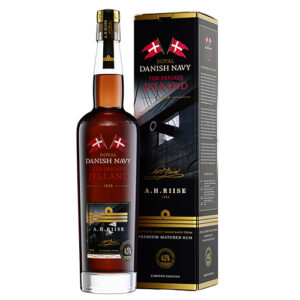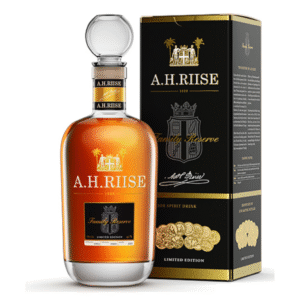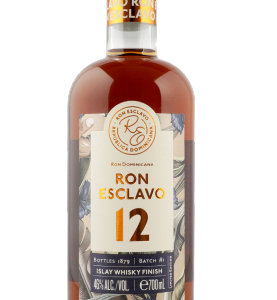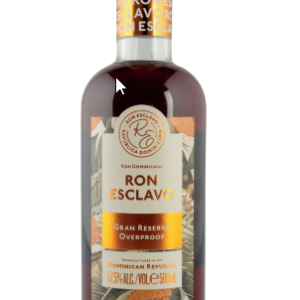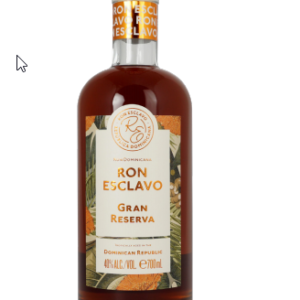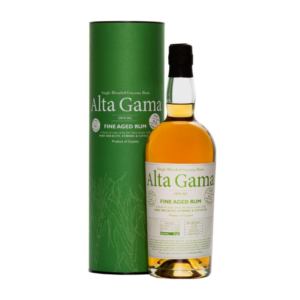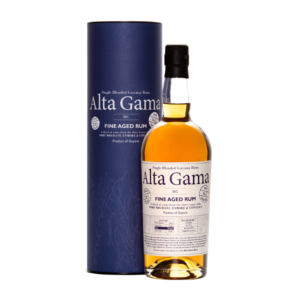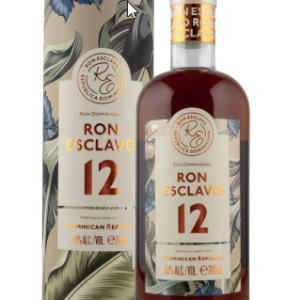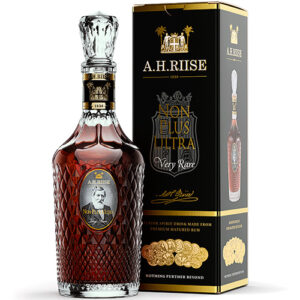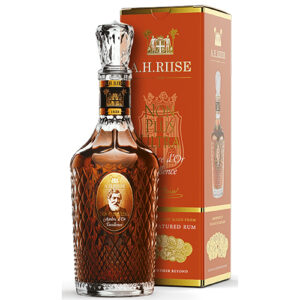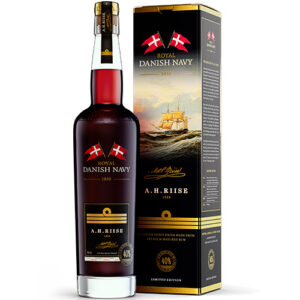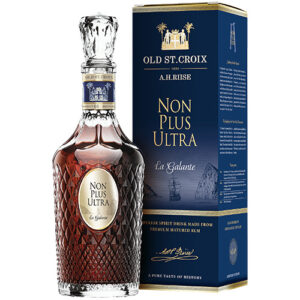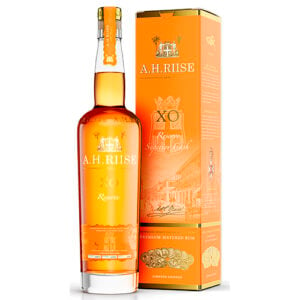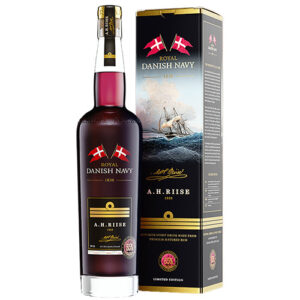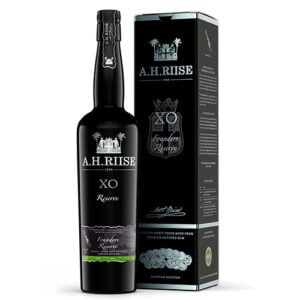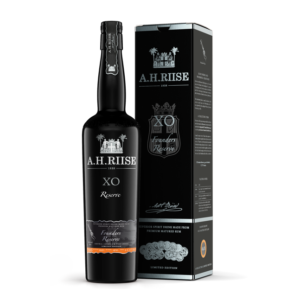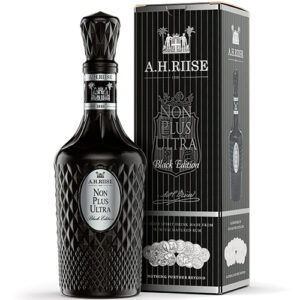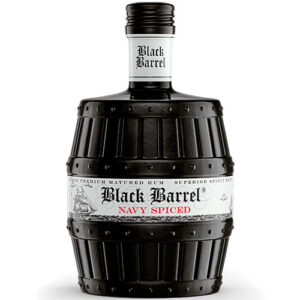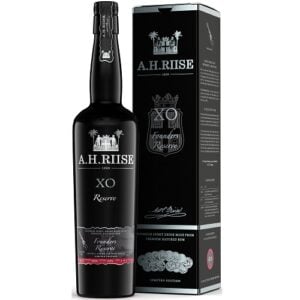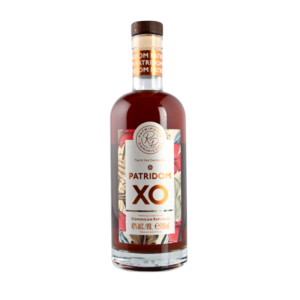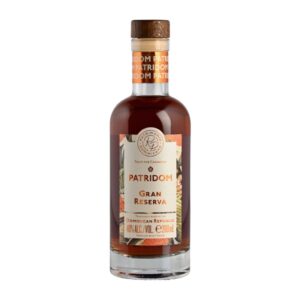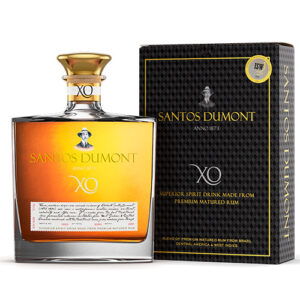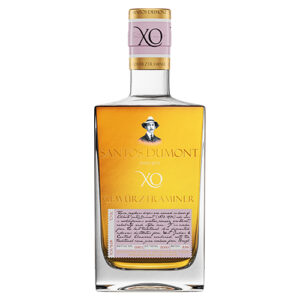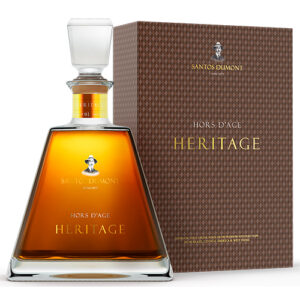Showing 1–24 of 29 resultsSorted by popularity
Rum-Based Spirits – The Complete Guide
TL;DR: In Brief
- Rum-based spirits are characterized by their foundation in rum, a distilled alcoholic beverage made from sugarcane byproducts
- They are primarily crafted by infusing rum with fruits, spices, herbs, or other flavorings and are defined by their blending process
- Available in several styles, including spiced rum, fruit-infused rum liqueurs, and cream-based rum liqueurs
- Best enjoyed neat, over ice, or as key ingredients in tropical cocktails like Piña Colada or Mai Tai
Disclaimer: This guide is intended for informational purposes for adults over 18 years of age. Vault of Spirits encourages responsible alcohol consumption.
Introduction to Rum-Based Spirits
Rum-based spirits have a rich history and fascinating craftsmanship behind them. From their origins in the Caribbean to their global popularity today, these spirits have evolved to become some of the world’s most cherished libations.
This guide provides insight into the production, flavor profiles, and enjoyment of rum-based spirits, whether you’re a novice or experienced enthusiast.
Offering a delightful bridge between straight rum and sweeter liqueurs, these versatile spirits combine the depth and character of rum with additional flavors that create entirely new drinking experiences.
How Did Rum-Based Spirits Originate?
From Past to Present
Rum-based spirits trace their beginnings to the Caribbean in the 17th century, where the abundant sugarcane plantations provided the perfect raw material for rum production.
As European colonizers established sugarcane plantations across the Caribbean islands, rum production flourished as a way to utilize molasses, a byproduct of sugar production.
The earliest rum-based concoctions were likely created by sailors who would infuse their daily rum rations with local fruits and spices to improve flavor and, they believed, prevent scurvy during long voyages.
Which Historical Milestones Shaped Rum-Based Spirits?
The British Navy’s tradition of providing sailors with a daily rum ration, or “tot,” led to the creation of spiced rums and other flavored variations that could withstand long journeys at sea.
The 18th century saw the refinement of rum production techniques, allowing for more consistent quality and the development of more sophisticated infusions.
The Prohibition era in the United States (1920-1933) pushed many rum producers to diversify into flavored products that could be marketed as “medicinal” options or that would appeal to broader tastes once legal consumption resumed.
How Have Rum-Based Spirits Influenced Cultural Traditions?
In the Caribbean, rum-based spirits play a central role in celebrations, religious ceremonies, and everyday social gatherings, often infused with local botanicals reflecting island traditions.
Tiki culture, which emerged in the 1930s, popularized rum-based cocktails and spirits in the United States, creating lasting associations between these drinks and tropical leisure.
Many islands have their signature rum-based spirits that serve as national symbols: Jamaica’s rum creams, Martinique’s rhum arrangé, and Puerto Rico’s pitorro (coquito) all represent local cultural identities through spirits.
Why Are Rum-Based Spirits Popular Today?
The craft cocktail renaissance has sparked renewed interest in traditional and innovative rum-based spirits as bartenders seek authentic and complex ingredients.
The versatility of rum-based spirits appeals to modern consumers who appreciate their flexibility as standalone sippers or cocktail components.
Growing interest in tropical vacations and destination-themed experiences has consumers seeking these spirits to recreate vacation memories at home.
The diverse flavor profiles available in rum-based spirits make them accessible entry points for new spirit enthusiasts while offering complexity for connoisseurs.
How Are Rum-Based Spirits Produced?
What Raw Materials Are Used in Production?
Rum-based spirits begin with rum as their foundation, which itself is produced from sugarcane byproducts such as molasses or fresh sugarcane juice.
The quality and style of the base rum significantly impacts the final product’s character, with choices ranging from light white rums to aged dark varieties.
Primary ingredients:
- Base rum – Provides the foundational flavor and alcoholic content
- Sweeteners – Often include sugar, honey, or fruit syrups to balance the alcohol
- Flavorings – Can include fruits, spices, herbs, vanilla, coconut, coffee, or other botanicals
How Does the Infusion Process Work?
Traditional infusion involves steeping ingredients directly in the rum, allowing their flavors to be extracted naturally over time.
Cold infusion, where ingredients are macerated in rum at room temperature, preserves delicate flavors but requires longer processing time (weeks to months).
Hot infusion accelerates the process by heating the rum with the flavoring ingredients, extracting flavors more quickly but potentially losing some of the more volatile compounds.
Some producers use vacuum distillation to infuse flavors at lower temperatures, preserving more subtle notes while speeding up the process.
What Distillation Techniques Are Used?
While the base rum undergoes traditional distillation methods, many rum-based spirits don’t require further distillation after infusion.
Common distillation methods for the base rum include:
- Pot still distillation – Creates fuller-bodied rums with more congeners, providing a robust base for spiced or dark flavor infusions
- Column still distillation – Produces lighter, cleaner rums that serve as excellent canvases for subtle fruit or floral infusions
- Hybrid approaches – Combine methods to create balanced base spirits with both complexity and clarity
What Is the Significance of Aging?
Some rum-based spirits benefit from aging the base rum before infusion, adding vanilla, caramel, and wood notes that complement the added flavors.
Post-infusion aging allows the various flavor components to marry and develop more complex interactions, though this is less common than pre-infusion aging of the base rum.
The aging environment, including temperature fluctuations and humidity, can significantly impact how flavors develop in rum-based spirits over time.
While many commercial rum-based spirits are filtered and stabilized for consistency, some craft producers embrace the evolution that occurs in the bottle over time.
Which Regions Are Known for Rum-Based Spirits?
Where Are the Best Variants Produced?
The Caribbean remains the spiritual home of rum-based spirits, with Jamaica, Barbados, and Martinique producing distinctive styles that reflect their rum traditions.
Central American countries like Guatemala and Nicaragua have developed reputations for complex, often coffee or cocoa-infused rum spirits that highlight local agriculture.
The Philippines has a long tradition of creating coconut-infused rum products that have gained international recognition.
In recent years, craft distilleries throughout North America and Europe have begun creating innovative rum-based spirits using locally sourced ingredients for infusions.
How Do Geography and Climate Affect the Flavor?
Tropical climates accelerate aging and infusion processes, creating more rapid extraction of flavors from added ingredients.
Local botanical availability strongly influences regional styles, with island producers naturally incorporating indigenous fruits, spices, and herbs.
Maritime environments can impart subtle saline qualities to rum-based spirits aged near the ocean, complementing sweet and spiced components.
The terroir of sugarcane growing regions translates through the base rum, providing distinct regional character even before infusion begins.
What New Trends Are Seen in Rum-Based Spirit Production?
Craft producers are experimenting with unusual botanical combinations, creating terroir-driven expressions that reflect local ecosystems.
Low-ABV and reduced-sugar variants are emerging to meet health-conscious consumer demands while maintaining flavor complexity.
Barrel-finishing in wine, whiskey, or other spirit casks adds additional layers of complexity to already flavored rum spirits.
Transparency in sourcing and production methods is becoming more important, with producers highlighting the provenance of both their base rum and infusion ingredients.
What Do the Different Quality Designations Mean?
Unlike rum itself, rum-based spirits rarely have formal classification systems recognized across the industry.
Terms like “premium” or “reserve” are not legally defined for these products and vary by producer.
“All-natural” indicates the absence of artificial flavors or colors, though this claim isn’t always independently verified.
Age statements typically refer to the base rum rather than the finished infused product, so an “8-year-old spiced rum” likely contains rum aged for 8 years before flavoring.
How Do Rum-Based Spirits Taste?
What Characterizes the Typical Flavor Profile?
Rum-based spirits build upon the foundation of rum’s inherent sweetness and complexity, with added dimensions from infused ingredients.
The base rum often contributes caramel, vanilla, and tropical fruit notes, which are then enhanced or contrasted by added flavorings.
Typical aromatic profiles:
- Sweet notes – Caramel, vanilla, honey, tropical fruits, coconut
- Spice elements – Cinnamon, nutmeg, clove, allspice, star anise, black pepper
- Herbal qualities – Mint, lemongrass, hibiscus, bay leaf, citrus peel
How Does the Flavor Vary Between Different Styles?
Spiced rums typically feature warm baking spices, vanilla, caramel, and sometimes citrus notes, creating a warming, dessert-like experience.
Fruit-infused rum liqueurs emphasize tropical or exotic fruit flavors, often with heightened sweetness and lower alcohol content than their spiced counterparts.
Cream-based rum spirits blend the rum’s character with rich dairy elements, creating indulgent, dessert-like profiles with notes of chocolate, coffee, or coconut.
Herbal rum infusions might incorporate local botanicals for medicinal traditions or distinctive regional character, often with more savory or bitter elements.
How Does the Flavor Develop with Age?
Over time, particularly fiery or sharp notes from the infused ingredients tend to mellow and integrate more harmoniously with the base rum.
Some fruit-infused spirits may lose brightness but gain complexity as the fruit notes marry more deeply with the rum’s characteristics.
Cream-based rum products have shorter shelf lives than other varieties and should be consumed more quickly to experience their intended flavor profile.
Unlike straight spirits, most rum-based products are not intended for extended aging after bottling and are best enjoyed within 1-2 years of purchase.
What Signs Reveal High Quality?
Balance is key—high-quality rum-based spirits integrate their flavoring elements without masking the character of the base rum.
Complexity that develops from first sip to finish, revealing different flavor notes as you taste, indicates careful production.
Natural, authentic flavors that taste true to their source ingredients rather than artificial or chemical.
Smooth texture without harsh alcohol burn, regardless of whether the spirit is sweet or dry in its overall profile.
How Are Rum-Based Spirits Best Enjoyed?
What Is the Optimal Serving Method?
Sweeter, cream-based rum spirits are typically served chilled or over ice to enhance their creamy texture and dessert-like qualities.
Spiced and flavored rums can be enjoyed neat at room temperature to fully appreciate their aromatic complexity.
Many rum-based spirits make excellent digestifs, served in small portions after a meal to aid digestion and provide a sweet conclusion.
The serving method should complement the specific style: lighter, fruit-infused varieties benefit from slight chilling, while spiced versions can stand up to room temperature service.
Which Glass and Temperature Are Ideal?
A tulip-shaped snifter concentrates aromas and works well for sipping spiced or aged rum-based spirits neat.
Rocks glasses are versatile options for serving these spirits on ice, allowing space for proper dilution.
Cordial or liqueur glasses are appropriate for sweeter, more concentrated rum-based spirits meant to be enjoyed in smaller portions.
Temperature preferences vary by style: 55-65°F (13-18°C) for spiced varieties, 45-55°F (7-13°C) for fruit-infused options, and 40-45°F (4-7°C) for cream-based products.
How Do You Taste Like an Expert?
Begin by examining the color and viscosity, noting the legs or tears that form on the glass which indicate sugar content and body.
Nose the spirit gently, first from a distance and then closer to identify the base rum characteristics and the added flavor elements separately.
Take a small sip and let it coat your palate, noting the progression from initial impression to mid-palate and finish.
Consider the balance between the rum base and added flavors—neither should completely dominate unless that’s the intended style.
Which Dishes Complement Rum-Based Spirits?
Spiced rum varieties pair wonderfully with chocolate desserts, enhancing the cocoa notes while providing warming contrast.
Fruit-infused rum spirits complement tropical fruit desserts or can be drizzled over vanilla ice cream for a simple but elegant dessert.
Coconut rum-based spirits pair beautifully with Thai and other Southeast Asian cuisines, complementing both spicy and sweet elements.
Coffee or chocolate-infused rum products make excellent companions to tiramisu, cheesecake, or other creamy desserts.
Which Cocktails Can Be Made with Rum-Based Spirits?
Which Classic Cocktails Should You Know?
Piña Colada
Ingredients: Coconut rum liqueur, pineapple juice, coconut cream, white rum
Preparation: Blend all ingredients with ice until smooth and creamy
History: Created in Puerto Rico in the 1950s, this tropical favorite showcases coconut rum liqueur’s ability to enhance the classic cocktail
Painkiller
Ingredients: Dark rum, spiced rum, pineapple juice, orange juice, cream of coconut
Preparation: Shake all ingredients with ice and strain into a glass over fresh ice
History: Originally from the British Virgin Islands, this tiki classic benefits from the added dimension of spiced rum
Which Modern Cocktails Are Worth Trying?
Spiced Rum Espresso Martini
Combining coffee liqueur, fresh espresso, and vanilla-spiced rum creates a warming twist on the contemporary classic cocktail.
Coconut Negroni
Replacing traditional gin with coconut rum creates a tropical variation that maintains the bitter-sweet balance of the original.
Rum Cream Old Fashioned
A decadent twist using aged rum, rum cream liqueur, chocolate bitters, and a touch of maple syrup for an indulgent sipping experience.
How Are Rum-Based Spirits Enjoyed Neat?
Spiced rums can be enjoyed at room temperature in a tulip glass to concentrate their aromas, often as an after-dinner digestif.
Fruit-infused rum spirits are delightful slightly chilled or with a single large ice cube to gently dilute their sweetness.
Cream-based rum liqueurs are best served well-chilled in small portions, either in cordial glasses or over crushed ice.
Coffee-infused rum products make excellent alternatives to dessert when served neat after dinner.
Which Homemade Variants Can You Experiment With?
Homemade spiced rum is relatively easy to create by infusing white or gold rum with cinnamon sticks, vanilla beans, cloves, and orange peel for 1-2 weeks.
Tropical fruit infusions can be made by adding fresh pineapple, mango, or passion fruit to rum and allowing it to steep for several days before straining.
Coffee-infused rum requires only quality coffee beans steeped in rum for 24-48 hours, creating a versatile spirit for cocktails or sipping.
For a seasonal treat, infuse rum with warming spices and a touch of maple syrup or honey to create a personalized winter spirit.
What Should You Know Before Buying Rum-Based Spirits?
Which Details Should You Pay Attention to When Buying?
Check the ingredient list when available—high-quality products will use natural flavorings rather than artificial ones.
Look for transparency about the base rum used, including its origin and age, which indicates a quality-focused producer.
Sugar content varies dramatically between products, so consider your preference for sweetness level before purchasing.
Alcohol content is important—higher proof spirits (above 35% ABV) typically retain more rum character, while lower proof options (15-25% ABV) tend to emphasize the added flavors.
What Do You Get for Your Money in Different Price Ranges?
Budget options ($15-25) typically use younger rum bases and may contain artificial flavors or colors but can still make satisfactory cocktail ingredients.
Mid-range products ($25-40) usually feature natural ingredients and higher quality base rums, offering good value for both sipping and mixing.
Premium selections ($40-70) often use aged rum bases and exceptional infusion ingredients, with more complex flavor profiles suitable for connoisseur sipping.
Ultra-premium products ($70+) might feature rare base rums, unique production methods, or limited edition seasonal ingredients that create truly distinctive experiences.
How Are Rum-Based Spirits Properly Stored?
Most rum-based spirits should be stored upright in a cool, dark place away from direct sunlight, which can degrade flavors and colors.
Once opened, spirits without dairy components will last 6-12 months before slight oxidation may affect flavor; resealing tightly after each use helps preserve quality.
Cream-based rum liqueurs require refrigeration after opening and typically maintain quality for only 4-6 months due to the dairy components.
Check bottles of fruit-infused rums occasionally for color changes or sediment, which may indicate flavor deterioration.
Are Rum-Based Spirits a Good Investment?
Unlike straight aged rums, most rum-based spirits are not considered investment-grade collectibles and are produced for consumption rather than appreciation in value.
Limited edition releases from prestigious producers occasionally gain modest value, particularly those with seasonal or rare ingredients that cannot be replicated.
The best “investment” in rum-based spirits is in quality products that provide enjoyment rather than financial returns.
Some vintage bottles from discontinued lines or with historical significance may attract interest from collectors, but this market is much smaller than for whiskey or wine.
Which Brands Do We Recommend?
What’s Best for Beginners?
Kraken Black Spiced Rum offers an accessible entry point with prominent vanilla and spice notes in an eye-catching bottle design.
RumChata provides a gentle introduction to cream-based rum liqueurs with its horchata-inspired cinnamon and vanilla profile.
Malibu Coconut Rum remains a staple for those new to fruit-infused rum spirits, with its straightforward coconut character that works well in simple mixers.
Brinley Gold Shipwreck Vanilla Rum balances natural vanilla flavor with genuine rum character at a reasonable price point.
What Will Impress Enthusiasts?
Plantation Pineapple Rum (Stiggins’ Fancy) elevates fruit-infused rum with its sophisticated production method of separately infusing the rinds and flesh before blending.
Chairman’s Reserve Spiced Rum from St. Lucia offers a complex array of local spices and a quality aged rum base that satisfies purists.
Element [Shrub] presents innovative rum-based expressions using vinegar infusions alongside fruits and spices for truly unique tasting experiences.
Foursquare Rum Cream from Barbados demonstrates how a truly excellent base rum can elevate a cream liqueur beyond ordinary sweetness.
Which Bottles Are Most Sought After?
Havana Club Tributo Rum Liqueur editions are limited annual releases featuring exceptional aged rum bases with unique flavor infusions.
Rhum Clement’s seasonal Creole Shrubb releases using rare orange varieties or special aging techniques command premium prices.
The Duppy Share Spiced offers a cult favorite created by blending rums from Jamaica and Barbados with an exceptional spice blend.
Lost Spirits Navy Style Rum variations with their innovative rapid-aging technology create uniquely flavored expressions that sell out quickly.
Where Do You Get the Most for Your Money?
Diplomatico’s Mantuano makes an excellent base for homemade infusions, offering complexity and quality that elevates DIY experiments.
El Dorado Spiced Rum delivers exceptional value with its quality Demerara rum base and authentic spice character.
Siesta Key Spiced Rum uses real honey rather than artificial sweeteners, creating a distinctive flavor profile at a reasonable price point.
Koloa Kauai Coffee Rum from Hawaii delivers genuine coffee flavor and quality rum character in a versatile bottle that works neat or in cocktails.
Frequently Asked Questions
What Are Rum-Based Spirits?
Rum-based spirits are alcoholic beverages that use rum as their foundation, enhanced with additional flavors through infusion, blending, or secondary fermentation.
They include spiced rums, fruit-infused rum liqueurs, cream rum liqueurs, and other flavored variations that build upon rum’s inherent character.
While sharing rum’s sugarcane origins, these products feature additional ingredients that create distinctive flavor profiles beyond traditional rum categories.
How Are Rum-Based Spirits Produced?
Production begins with a base rum that is then infused with fruits, spices, herbs, or other flavorings through maceration, distillation, or direct addition of flavor extracts.
Many products involve blending multiple elements: the base rum, natural or artificial flavoring agents, sweeteners, and sometimes color additives.
Cream-based variants incorporate dairy elements through emulsification techniques that ensure stability and proper texture in the finished product.
What Characterizes Rum-Based Spirits?
A foundation of rum’s distinctive sugarcane-derived character, with additional flavor dimensions from the infused ingredients.
Typically sweeter than straight rums, with flavor profiles intentionally designed to highlight the added elements while complementing the base spirit.
Greater versatility in cocktail applications, often designed to simplify complex flavor combinations by incorporating multiple taste elements in a single ingredient.
Where Can You Buy Rum-Based Spirits?
Mainstream rum-based spirits are widely available at liquor stores, supermarkets with spirits sections, and online retailers where legal.
Specialty or craft expressions can be found at dedicated spirits retailers, directly from distilleries, or through specialty online shops that focus on rum and rum-based products.
When traveling to rum-producing regions, local markets and distilleries often offer unique regional expressions not exported internationally.
Many premium hotel bars and cocktail establishments now sell bottles of their featured spirits, providing access to carefully curated selections.
